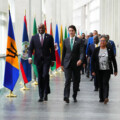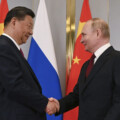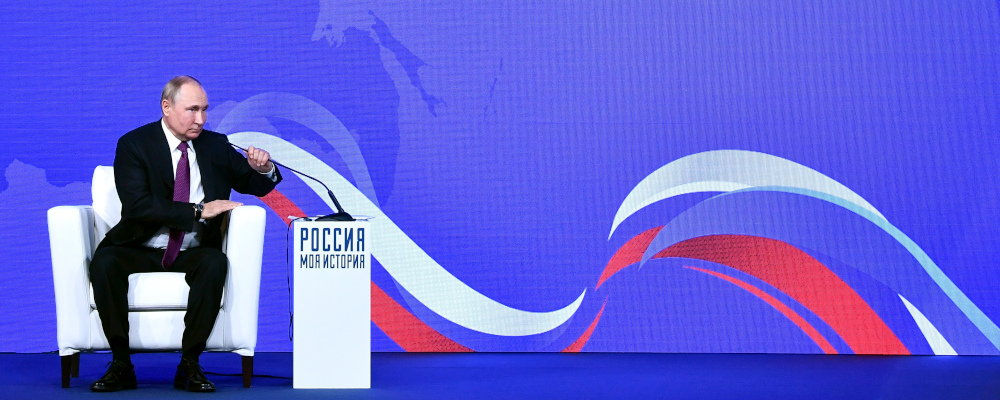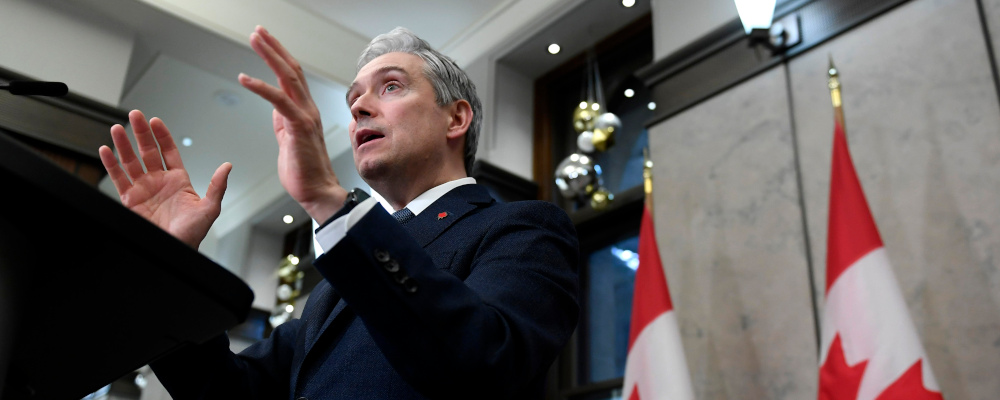Review of: The Story of Russia
Author: Orlando Figes
Publisher: Metropolitan Books, 2022
On a business trip to Moscow in 2005, Robert Kraft, owner of the New England Patriots, met Vladimir Putin, who noticed Kraft’s Superbowl ring. Putin asked to try it on and said, “I could kill someone with this ring.” Instead of giving it back, Putin slipped the ring into his pocket and walked away, surrounded by three security men. Putin had just stolen Kraft’s ring. Rather than cause an international incident, the State Department suggested to Kraft that the ring was a gift to Putin.
It’s a small incident but a telling one about Putin’s character. He feels entitled to whatever he wants in the tradition of past Russian leaders, the tsars who were entitled to all the wealth of the nation. Since Kraft was in his country, the ring was Putin’s for the taking without explanation or apologies. At a deeper level, Putin believes that Russia has never received the respect it deserved, and to his mind, the ring should have been offered as a gift the same way the West should acknowledge Russia’s greatness. To show his contempt for the West, Putin treated Kraft the same way he’d treat any citizen in his domain. This pose of contempt merely highlights the ultimate fragility of strongman rule—you can only send so many of your citizens to an early death in a needless war before they stop pretending that you are their great protector.
Throughout Russia’s history, Russians have been told that Europe, or the West, has never acknowledged the debt of gratitude for protecting Europeans from the ravages of foreign invasions—at the expense of countless Russian lives—starting with the defeat of the Mongolians in the battle of Kulikova in 1380. Putin claims the battle is evidence of Russia’s greatness that stopped the “Asiatic Hordes” from moving further west. This national myth is followed by others, including the Russian military sacrifice defeating Napoleon’s Grande Armée in 1812. Putin exaggerates these mythical stories to stir up resentment against the West. In the case of defeating the Mongols, they returned two years later and sacked Moscow killing half its people.
The history of Russia is told brilliantly in a new book, The Story of Russia, by highly respected Oxford historian Orland Figes. This book is good old fashion history that respects facts and truth while telling an interesting story in contrast to postmodern social history, which is popular in history departments where truth and facts are mere illusions.
Figes takes the reader through a thousand years in 300 pages, from the founding of Russia in Kievan Rus, now Ukraine, where Viking explorers and fur traders mingled with other Slavic peoples in the late 900s. Figes tells the story of the influence of the Mongols on Russian history and culture—much downplayed to boost their European heritage by later historians. Nonetheless, the impact of Mongol culture and statehood had a profound and lasting effect on Russian history. He reminds us that Russia was under the Tatar yoke for centuries until Ivan IV (Ivan the Terrible) finally defeated the Mongols in the 1550s. Tatar descendants, including writer Turgenev, composer Rimsky-Korsikov, and revolutionary Bukharin, have deeply affected Russian culture.
With the control of education throughout the country, Putin is now rewriting Russian history to stress its Eurasian roots while demonizing the West as the source of Russia’s and the world’s problems. He has also updated Russia’s Boyar past, where feudal nobility paid tribute to the tsars and served at their pleasure. Today the same applies to a select few oligarchs whose wealth and power stem from Putin’s indulgence and who are quickly disposed of if they displease him.

The pinnacle of Putin’s humiliation arrived when no Western Allies sent representatives to commemorate the 70th anniversary of the end of WW2 on May 9, 2015. Russia was left “unthanked” and “unrecognized” by the West for the contribution of the Soviet Union in defeating Hitler and Nazism. Putin’s invasion of Crimea the year before certainly had something to do with the absence of Western powers. Putin now turns inward, searching for greatness that would restore what he called the “Russian world” (Russkii mir). He began promoting the work of the extreme nationalist philosopher Alexander Dugin who advocated rebuilding the Russian empire “based on the rejection of the Western liberal order and U.S. global domination.”
Another thinker, Ivan Ilyin (1883-1954), a monarchist and fascist sympathizer, provided a religious justification for Russia’s greatness as the world’s spiritual centre, with Moscow as the Third Rome after Jerusalem and Constantinople. This new world order would be led by a “national dictator”, a vision strongly supported by Moscow’s religious leader Patriarch Kirill, who also endorses Putin’s Ukrainian war.
But throughout much of Russian history, the attraction to European life and culture strongly held the Russian imagination. Tsars, including Peter the Great, wanted to remake Russia in the image of Europe by adapting Western dress, technology, education, and culture. Italian designers and workers were imported to build St. Petersburg, a city that would symbolize Russian sophistication and refinement. Even Catherine II (Catherine the Great) admired European enlightenment thinkers such as Voltaire, whose writings were shared with Russia’s intelligentsia. That ended with the 1789 French Revolution when she ordered books supporting enlightenment ideas be burned, including those of her friend Voltaire. In the words of Figes, Russia’s idealization of Europe was so shaken by the violence in France that “Nobles gave up Clicquot and haute cuisine for vodka and cabbage soup.”
Professor Figes reminds us that despite the hardships of the Russian people from the subjection of serfdom, and the millions killed under communist rule, civil society was always weak, making the country susceptible to propaganda and manipulation from the top. In the days of glasnost introduced under Mikhail Gorbachev to confront Russia’s murderous Soviet past, opening the country to examination and criticism had the opposite effect with the return of a virulent nationalism where today, 94 percent believe Gorbachev was a disaster. Most Russians wanted nothing to do with facing the past. Even the secret police are back in favour, with 70 percent who think well of Felix Dzerzhinsky, the much-feared founder of the Cheka, while Stalin remains Russia’s preferred authoritarian.
Stephen Kotkin, also one of the world’s great Russian scholars and Stalin biographer, observed that though Russia is a great country, its capabilities have never matched its aspirations. The war in Ukraine will only deepen that gap, making Putin’s sense of grievance and entitlement ever more dangerous.
Recommended for You

Geoff Russ: A future Conservative government must fight the culture war, not stand idly by

David Mulroney: Foreign Minister Joly, Xi Jinping’s China doesn’t do ‘dialogue’

Amal Attar-Guzman: Canada’s global leadership is waning. Why not expand our influence closer to home?

Political leader assassination attempts are on the rise worldwide after years of decline










